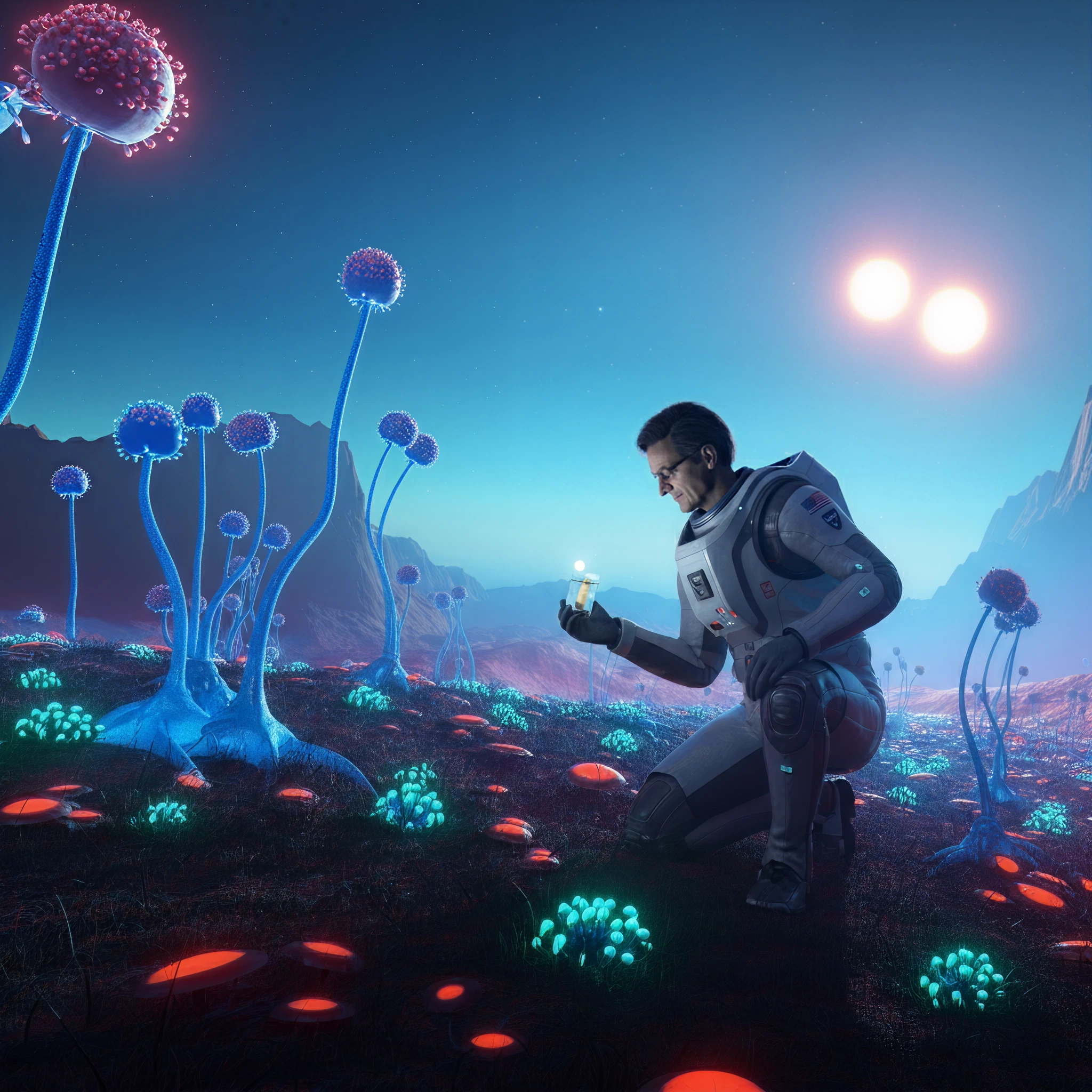Introduction
Recent claims about the potential signs of life on the distant exoplanet K2-18b have sparked significant excitement within the scientific community and beyond. Researchers from the University of Cambridge announced that they have detected chemical markers in the atmosphere of this intriguing planet, hinting at the possibility of life. However, this headline-grabbing claim has met with skepticism, particularly from Harvard professor and prominent astrophysicist Avi Loeb, who challenges its validity. He warns that these findings do not definitively prove the existence of life on K2-18b.
Background on K2-18b
K2-18b is an exoplanet located 124 light-years from Earth in the Leo constellation. Nearly nine times the size of Earth, it qualifies as a “Hycean exoplanet,” a term used for worlds that may have a hydrogen-rich atmosphere and ocean-covered surfaces, making them potentially hospitable for life as we know it. Since its discovery in 2015, K2-18b has been considered a top candidate in the search for extraterrestrial life due to these promising characteristics.
Its atmospheric properties and proximity to its host star position it within the “habitable zone,” where liquid water could exist. Despite these promising conditions, the debate about whether life exists there remains unresolved.
The Claim of Life Signs
The recent scientific buzz surrounding K2-18b originated from a team of researchers at the University of Cambridge who detected the presence of dimethyl sulfide (DMS) and dimethyl disulfide (DMDS) in the planet’s atmosphere. On Earth, microorganisms in marine environments are responsible for producing these molecules, notably DMS. Cambridge scientists argue that the presence of these compounds on K2-18b might point toward biological activity occurring on the planet.
However, interpreting these chemical signatures is complex. While the detection of such molecules may be consistent with the presence of life, the results are not conclusive. They must be considered alongside various environmental and chemical processes that could account for their abundance.
Loeb’s Skepticism About the Findings
Prominent Harvard physicist Avi Loeb has expressed doubts about the Cambridge findings, urging caution in interpreting the presence of dimethyl sulfide and dimethyl disulfide as definitive evidence of life. Loeb points out that these molecules, while associated with biological processes on Earth, can also form under abiotic (non-biological) conditions, such as in comets, which are devoid of life.
“K2-18b has 1,000 times greater abundance of these molecules compared to Earth,” Loeb explained in an interview. “It is not at all obvious that if you find such a molecule in the atmosphere of a planet, it is indicative of life,” he added. This high concentration complicates assumptions, as it raises the possibility of alternative, non-biological chemical reactions accounting for their presence.
Loeb emphasized that while this discovery is intriguing, this line of evidence alone cannot definitively confirm life. For him, deeper exploration and additional evidence are necessary before drawing bold conclusions.
Loeb’s Preference for Searching for Intelligent Life
Avi Loeb is well-known for advocating the search for intelligent extraterrestrial civilizations rather than focusing solely on microbial or primitive life forms. According to Loeb, the discovery of intelligent life would yield much clearer and more conclusive evidence, as it would likely involve the identification of artifacts or technology (i.e., extraterrestrial “gadgets”) that cannot be mistaken for natural phenomena.
“An advanced civilization is someone that we can learn from,” Loeb said, expressing a preference for pursuing signals or objects that could indicate intelligent life. He believes that while it is valuable to study planetary conditions capable of supporting microbial life, attention should also be directed toward searching for signs of technological civilizations, as such a discovery would have profound implications for humanity.
Balancing Optimism with Scientific Rigor
The debate about K2-18b highlights the need for both scientific optimism and critical rigor. While groundbreaking discoveries like these fuel our curiosity and expand our understanding of the cosmos, they also demand careful scrutiny. The detection of chemical markers like dimethyl sulfide is certainly exciting, but as Loeb’s comments underline, proof of life requires more robust evidence.
This back-and-forth between researchers is a healthy part of scientific dialogue. It reminds us that the quest to find life beyond Earth is an intricate puzzle requiring many pieces of evidence to fit together.
Conclusion
The discovery of potential biosignatures on K2-18b ignites hope and curiosity about the possibility of life beyond our planet, yet skepticism raised by scientists like Avi Loeb adds necessary caution to the dialogue. While the findings reported by the University of Cambridge are certainly noteworthy, they do not provide definitive proof of extraterrestrial life. Instead, they represent an intriguing clue in our ongoing search for answers.
As technological advancements, such as NASA’s James Webb Space Telescope, continue to enhance our capabilities, the mysteries of planets like K2-18b may grow clearer. Until then, the debate underscores the scientific community’s dual commitment to exploring the unknown and maintaining rigorous standards in the search for life in the cosmos.








